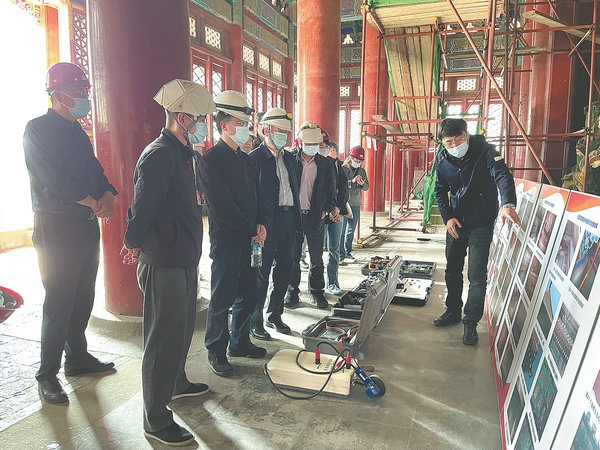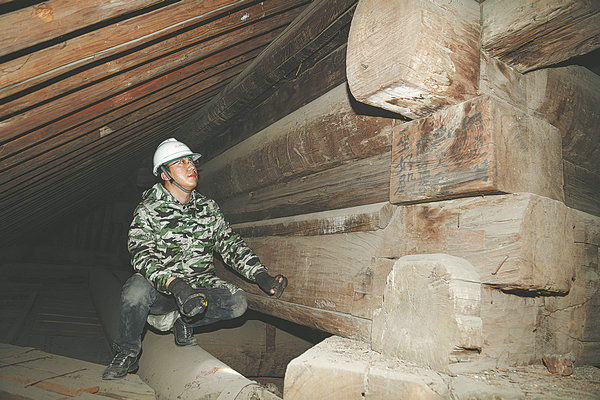


Zhang introduces ancient architectural test equipment and presents previous achievements to officials in charge of architectural protection in Beijing. [Photo provided to China Daily]
By 2008, Zhang had started focusing his attention on preventive tests for historical buildings, especially those made of wood. "I saw there was nothing new in the field of testing and protecting wooden structures," he recalls.
Most methods were ancient, and efforts were concentrated on structures that were already run-down. Zhang thought outside the box and decided that, maybe, prevention would be better than cure. He first introduced the micro-drilling impedance analyzer. "The detective needle offers a glimpse inside the woodwork. The needle is the size of natural cracks and does not cause damage," he says.
Since the tool was largely used in forestry at that time, Zhang worked hard to establish suitable parameters to determine the health of immovable historical structures. Today, he heads the scientific protection division of the Beijing archaeology institute. Along with his team, he has developed five national patents for preventive testing and restoration of historical buildings. They comply with industrial standards.
Zhang says he has seen significant development of preventive testing methods across the country over the past six years. Last year, the General Office of the State Council issued a plan for cultural relic protection and scientific innovation for the 2021-25 period. The plan categorically calls for more capacity for "preventive protection".
To make things easier, a greater number of science graduates are joining the field, says Zhang. One needs to acquire interdisciplinary knowledge for the job, including the architectural styles of various historical periods. It is about knowing more than just chemistry and physics, he adds.
Giving an old building a complete health check is no mean feat, Zhang warns. "Sometimes, we have to climb onto a roof, where dirt is layered so thick that even the best face masks cannot protect us," he says.
So far, Zhang has joined 10 restoration and design programs at major national cultural relic sites. He has also conducted over 40 safety tests of historical buildings in Beijing. Recently, he and his team finished the overall safety test of an architectural cluster at Xiaoxitian in Haidian district. The project was commissioned by the Beihai Park authorities.
"It is necessary to do preceding work for preventive protection and research-based repair," says Ge Huaizhong, deputy head of the Beijing institute. All the data from the tests will be studied to draft future restoration methods, he adds.
As of now, most ancient structures in China have been repaired on an emergency basis. The next stage is preventive protection, Ge says.
Zhang believes preventive protection will not just keep accidents from happening, but will save time and money. He says: "Our country has a great number of historical buildings. If we could save them all, how great would that be!"

He checks the inside of a historical building's ceiling. [Photo provided to China Daily]
点击右上角![]() 微信好友
微信好友
 朋友圈
朋友圈

请使用浏览器分享功能进行分享
